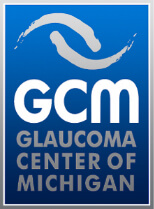Many of you may have seen Dr. Les Siegel recently interviewed on Fox 2 News (see video) regarding something called Acute Angle Closure Glaucoma and its relationship to over the counter (OTC) cold medications. While this is something that can happen, it is undoubtedly relatively rare and just falls into the one of the many categories of angle closure glaucoma. Angle closure glaucoma itself results from an elevation of the intraocular pressure in the eye due to anterior compression and blockage of the internal angle (or drainage system) of the eye. This eye pressure elevation in turn damages the optic nerve leading to what we call glaucoma. In angle closure the internal eye pressure elevation can happen due to multiple reasons and it can present chronically, sub-acutely or acutely. Narrow angle is different than acute angle closure. In narrow angle the drainage system is partially but not completely blocked and some fluid can still drain properly. If not treated it can result in acute pressure elevation which then causes the nerve damage that is called glaucoma. The more common “open angle” glaucoma is when the drainage system is open and the internal eye fluid can drain, it just doesn’t work well and thus the eye pressure stays elevated also resulting in the same optic nerve damage.
Acute angle closure is a specific form of angle closure where the internal drainage system is fully blocked; it is an urgent but uncommon dramatic symptomatic event with blurring of vision, painful red eye, headache, nausea, and vomiting. Diagnosis is made by noting high intraocular pressure (IOP), corneal edema (swelling), shallow anterior chamber, and a closed angle on gonioscopy. As mentioned in the story, OTC cold medications, antidepressants, some antibiotics (sulfa medications such as Bactrim) and other sulfa medications are the most well-known culprits. A similar presentation can be from a medicine called Topamax (topiramate) that is commonly used for headaches and seizure prophylaxis. These are all still relatively rare and generally patients likely have other risk factors such as farsightedness (shorter eye or hyperopia), older age with larger lenses (dense cataracts).
The story discussed using a needle to “break the attack”. This was not meant to scare you, this is a common way we can quickly and safely lower the eye pressure to stop the attack (and make you feel better!), but it does not ultimately fix the problem. Depending on your situation you may require medical treatment with drops to lower the eye pressure, an in office procedure called laser peripheral iridotomy or ultimately lens removal (cataract surgery) or other surgery aimed at opening the angle or lowering the intraocular pressure. If the pressure elevation and angle closure was induced by medications as discussed in the Fox 2 piece, those medications are stopped. Long term the follow up is different and unique to each patient.
While angle closure is a less common issue than the more well-known “open-angle” glaucoma, it is one that in many cases can be avoided with preventative treatments. At Glaucoma Center of Michigan we aim to fully evaluate you and your risk for angle closure. We aim to make you feel comfortable with the treatment options available to avoid having a sight damaging issue. Please contact us to schedule a visit (Click here to contact Glaucoma Center of Michigan or call 248.356.0098 to schedule an appointment).
